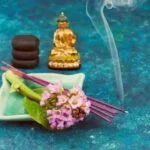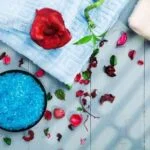Aromatherapy and essential oils have gained significant popularity in recent years as people seek natural remedies for various health and wellness concerns. While these terms are often used interchangeably, it is important to understand that there are distinct differences between aromatherapy oils and essential oils. In this article, we will delve into the world of aromatherapy and essential oils to unravel their origins, uses, and how they differ from other oils.
Aromatherapy is a holistic approach to healing that utilizes the aromatic properties of plant-based extracts to promote physical, emotional, and psychological well-being. These extracts are known as aromatherapy or essential oils. Derived from flowers, leaves, stems, roots, or fruits of plants through various extraction methods such as distillation or cold pressing, these oils capture the therapeutic essence of the plant.
Essential oils, on the other hand, refer specifically to highly concentrated plant extracts that retain the fragrance and therapeutic properties of the source plant. Unlike other types of oils such as cooking oils or carrier oils used for dilution purposes, essential oils are potent and should be used with caution due to their concentrated nature.
While both aromatherapy oils and essential oils can be utilized in similar ways for their therapeutic benefits, it is important to understand their distinctions. Aromatherapy oils may include a wide range of fragrant plant-based products such as absolute oils, hydrosols or floral waters which may not be classified as true essential oils. Essential oils contain volatile compounds that can vary greatly depending on the specific plant they are derived from.
In the upcoming sections of this article, we will explore in more depth the origins and uses of aromatherapy oils and essential oils. We will also compare their similarities and differences while delving into the science behind their therapeutic effects.
Additionally, common misconceptions surrounding these two terms will be addressed along with safety precautions and guidelines for choosing the right oil for your needs. By the end of this article, you will have a comprehensive understanding of aromatherapy oils and essential oils, enabling you to confidently incorporate them into your health and wellness routines.
Understanding Aromatherapy Oils
Aromatherapy oils, also known as essential oils, have been used for centuries for their therapeutic and healing properties. These oils are derived from various parts of plants such as flowers, leaves, stems, bark, and roots. The extraction process involves steam distillation or cold-pressing to obtain the concentrated essence of the plant.
The origins of aromatherapy can be traced back to ancient civilizations such as Egypt, Greece, and India. These ancient cultures recognized the power of scent and its ability to affect emotions and well-being. Aromatherapy oils were used in religious ceremonies, beauty rituals, and for medicinal purposes.
Today, aromatherapy oils are widely used in holistic healing practices and as a complementary therapy alongside conventional medicine. They are known for their natural fragrances that can evoke positive emotions and create a relaxing atmosphere. Aromatherapy oils have a wide range of uses including massage therapy, bath products, skincare formulations, home fragrance diffusers, and even culinary applications.
Uses of Aromatherapy Oils
1. Massage therapy: Aromatherapy oils are commonly used in massage treatments due to their soothing and relaxing qualities.
2. Skincare: Many skincare products incorporate aromatherapy oils for their nourishing and rejuvenating effects on the skin.
3. Stress relief: Certain aromas like lavender or chamomile are known for their calming properties that help reduce stress and anxiety.
4. Sleep aid: Essential oils like lavender or cedarwood can promote relaxation and improve sleep quality when used in diffusers or added to bathwater.
5. Mood enhancement: Different scents can uplift or invigorate moods, making them popular choices for creating a desired ambience in homes or workplaces.
It is important to note that while aromatherapy oils have numerous benefits, they should be used with caution. Some individuals may have allergies or sensitivities to specific oils, so it is recommended to do a patch test before using any new oil. Additionally, pregnant women, nursing mothers, and individuals with certain medical conditions should consult with a healthcare professional before incorporating aromatherapy oils into their routine.
Essential Oils 101
Essential oils are highly concentrated plant extracts that capture the natural aroma and therapeutic properties of plants. These oils are obtained through a process called distillation, where the volatile compounds of the plants are extracted, leaving behind a potent oil. Unlike other types of oils, such as carrier oils or cooking oils, essential oils do not contain fatty acids.
One key characteristic that sets essential oils apart from other types of oils is their aromatic properties. The distinct aroma of essential oils comes from the volatile compounds found in the plants they are derived from. These compounds give each essential oil its unique scent and therapeutic benefits.
Another important difference between essential oils and other types of oils is their concentration. Essential oils are highly concentrated, meaning that they contain a large amount of the plant’s volatile compounds in a small amount of oil. This concentration makes essential oils very potent and powerful when used correctly.
When it comes to using essential oils, it is crucial to note that these oils should not be ingested or applied directly to the skin without proper dilution. Due to their potency, undiluted essential oils can cause skin irritation or sensitization. It is recommended to mix essential oils with carrier oils before applying them topically.
Comparing Aromatherapy Oils and Essential Oils
Aromatherapy oils and essential oils are often used interchangeably, but they are not exactly the same. While both types of oils have therapeutic benefits and can be used in aromatherapy, there are some key differences between them.
Aromatherapy oils, also known as fragrance oils or perfume oils, are synthetic or diluted versions of natural plant extracts. These oils are typically made using a combination of essential oil components and other synthetic substances. Aromatherapy oils are often used for their pleasant scent and can be found in various products such as candles, soaps, and skincare items.
On the other hand, essential oils are pure extracts from plants that have been distilled or cold-pressed to capture their natural fragrance and therapeutic properties. Essential oils are highly concentrated and potent, making them powerful tools in aromatherapy practices. They contain the essence of the plant from which they are derived and have a wide range of applications for physical, emotional, and mental well-being.
One of the main differences between aromatherapy oils and essential oils is their composition. Aromatherapy oils often contain synthetic ingredients or diluted amounts of natural plant extracts. In contrast, essential oils are pure plant extracts without any additional substances added. This difference in composition can affect the potency and effectiveness of these oils in aromatherapy practices.
| Aromatherapy Oils | Essential Oils |
|---|---|
| Contain synthetic ingredients or diluted plant extracts | Pure extracts from plants without any additional substances |
| Used for their pleasant scent | Have a wide range of therapeutic applications |
| Found in various products like candles and soaps | Used in aromatherapy practices and skincare |
While both aromatherapy oils and essential oils can be used in aromatherapy, it is important to understand the differences between them. Essential oils are generally considered more potent and effective for therapeutic purposes, while aromatherapy oils are often chosen for their scent rather than therapeutic benefits. When using these oils, it is essential to ensure proper usage guidelines and safety precautions are followed for optimal results.
The Science Behind Aromatherapy and Essential Oils
Aromatherapy and essential oils have been used for centuries to promote physical and emotional well-being. But what exactly is the science behind these oils? In this section, we will dive into the chemical composition of aromatherapy oils and essential oils, as well as their therapeutic benefits.
Both aromatherapy oils and essential oils are composed of various chemical compounds that contribute to their unique properties. Aromatherapy oils are typically derived from plants through methods such as steam distillation or cold pressing. These oils often contain volatile organic compounds (VOCs) that give them their characteristic aroma and therapeutic effects.
On the other hand, essential oils are highly concentrated extracts obtained from plants and are known for their potent fragrance. They are usually derived through a process called solvent extraction, which involves using solvents like ethanol to separate the oil from the plant material. The resulting oil is then further purified to remove any traces of solvents.
The chemical composition of both aromatherapy oils and essential oils can vary depending on the plant species, growing conditions, and extraction methods used. However, they commonly contain compounds such as terpenes, alcohols, esters, ketones, phenols, and aldehydes.
These chemical compounds play a crucial role in the therapeutic benefits associated with aromatherapy and essential oils. For example, certain compounds like linalool in lavender oil or limonene in citrus oils have been shown to have calming and mood-boosting effects. Other compounds like eucalyptol in eucalyptus oil or menthol in peppermint oil exhibit expectorant properties that help with respiratory issues.
Overall, understanding the chemical composition of aromatherapy oils and essential oils allows us to appreciate their therapeutic benefits more fully. From relaxation and stress relief to immune support and pain management, these natural remedies offer a wide range of potential wellness benefits when used properly.
Aromatherapy vs Essential Oil Diffusers
Aromatherapy Methods of Application
Aromatherapy, as the name suggests, involves the use of aromas or scents to promote physical and emotional well-being. There are several methods of application when it comes to aromatherapy oils. One popular method is inhalation, where the aroma is inhaled directly or indirectly. This can be done by using a diffuser, adding a few drops of oil to a bowl of hot water, or simply placing a few drops on a tissue or cotton ball and inhaling.
Another method of application is through topical use. Aromatherapy oils can be applied directly to the skin, usually in diluted form with carrier oils such as coconut oil or almond oil. This allows the therapeutic properties of the essential oils to be absorbed through the skin and provide various benefits.
Essential Oil Diffusers
Essential oil diffusers are devices specifically designed to disperse essential oils into the air, allowing their scents to spread throughout a room or an entire space. There are different types of diffusers available on the market, each with its own unique features and benefits.
One common type of essential oil diffuser is the ultrasonic diffuser. This device uses ultrasonic vibrations to break down the essential oil into small particles that are then dispersed into the air as a fine mist. Ultrasonic diffusers also double as humidifiers, adding moisture to the air while filling it with fragrance.
Nebulizing diffusers, on the other hand, do not require water or heat. These types of diffusers use pressurized air or gas flow to atomize essential oils into tiny particles that are released into the air in concentrated form. Nebulizing diffusers are often preferred for their strong scent and therapeutic effects.
Choosing the Right Method for You
When deciding between aromatherapy methods of application and essential oil diffusers, it ultimately comes down to personal preference and the desired outcome. Inhalation methods are great for immediate sensory benefits and emotional support, while topical application allows for direct absorption into the body.
Essential oil diffusers are a convenient way to enjoy the aromas of essential oils throughout the day or in a larger space. They can be especially beneficial for creating a calming and relaxing atmosphere in your home or workspace. It’s important to choose a diffuser that suits your needs and preferences, taking into consideration factors such as noise level, size, design, and compatibility with different essential oils.
By understanding the various methods of application and diffusers available, you can incorporate aromatherapy into your daily routine in a way that is most effective and enjoyable for you.
Common Misconceptions
There are several common misconceptions surrounding both aromatherapy and essential oils that need to be addressed in order to have a better understanding of these practices. By debunking these misconceptions, individuals can make informed decisions about incorporating aromatherapy and essential oils into their lives.
Myth 1: Aromatherapy and Essential Oils Are the Same
One prevalent misconception is that aromatherapy and essential oils are interchangeable terms for the same thing. However, this is not accurate. Aromatherapy refers to the therapeutic use of scents and aroma to enhance well-being, while essential oils are concentrated liquids extracted from plants that capture their natural fragrance and essence. While essential oils are commonly used in aromatherapy practices, they are not synonymous with aromatherapy as a whole.
Myth 2: All Essential Oils Are Safe for Ingestion
Another misconception is that all essential oils can be safely ingested. This can be dangerous as some essential oils may be toxic or have adverse effects on the body when consumed orally. It is crucial to research and consult with a qualified aromatherapist or healthcare professional before considering ingesting any essential oil.
Myth 3: Aromatherapy Oils Can Cure Serious Medical Conditions
Aromatherapy is often seen as a holistic approach to health, but it is important to understand its limitations. While certain scents may help alleviate symptoms or improve overall well-being, it is not a substitute for medical treatment or a cure for serious medical conditions. Aromatherapy should be used as a complementary therapy alongside traditional medical care rather than solely relying on it for treating illnesses.
By dispelling these common misconceptions about aromatherapy and essential oils, individuals can gain a more accurate understanding of their uses and limitations. It is always advisable to do thorough research, consult professionals, and follow proper guidelines when incorporating aromatherapy and essential oils into one’s wellness routine.
Safety Precautions
When it comes to using aromatherapy oils and essential oils, it is important to prioritize safety and understand the proper usage guidelines. While these oils offer therapeutic benefits, they can also be potent and potentially harmful if used incorrectly. Dilution is a crucial step in ensuring safe use of these oils.
Essential oils are highly concentrated extracts derived from plants, which means they should never be applied directly to the skin without being diluted first. The potency of essential oils can cause skin irritation or sensitization if used undiluted. Diluting essential oils with a carrier oil, such as almond oil or jojoba oil, helps minimize the risk of irritation while still allowing the therapeutic properties to be effective.
The recommended dilution ratio for essential oils varies depending on factors such as age, health condition, and purpose of use. Typically, a dilution ratio of 2-3% is advised for adults. This means mixing approximately 12 drops of essential oil with 1 ounce (30 mL) of carrier oil.
However, for children and individuals with sensitive skin or certain health conditions, a lower dilution ratio may be necessary. It is always important to consult reliable sources or seek advice from certified aromatherapists when determining the appropriate dilution ratio for specific situations.
In addition to dilution, proper usage guidelines must be followed to ensure safety when working with aromatherapy and essential oils. Some essential oils are not safe for internal consumption or may interfere with certain medications. It is crucial to thoroughly research each individual oil before using it internally or topically.
Furthermore, some essential oils are not recommended for pregnant women or individuals with certain medical conditions such as epilepsy or high blood pressure. Adhering to proper guidelines is imperative when using these powerful substances for therapeutic purposes.
By understanding the need for dilution and following proper usage guidelines, individuals can safely enjoy the benefits of aromatherapy oils and essential oils. Taking these safety precautions not only protects against potential adverse effects but also allows for a more enjoyable and effective aromatherapy experience.
Choosing the Right Oil for You
When it comes to selecting the right oil for your needs, it’s important to consider the specific purpose you have in mind. Different oils offer different benefits and can be used for a variety of purposes, so knowing which oil to choose is crucial. Here are some tips on how to select the best oils for specific purposes.
Firstly, determine what your goal or desired outcome is. Are you looking to relieve stress and promote relaxation? Or perhaps you want to boost your mood and uplift your spirits? Identifying your intention will help guide you towards the most suitable oils.
For relaxation and stress relief, essential oils such as lavender, chamomile, and ylang-ylang are excellent choices. These oils have calming properties that can help reduce anxiety and promote a sense of peace and tranquility. They are often used in aromatherapy diffusers or added to bathwater for a soothing experience.
If you’re seeking an energizing effect or wanting to enhance focus and concentration, oils like peppermint, rosemary, and lemon are great options. These oils have invigorating properties that can stimulate the mind and body. They can be used in diffusers or diluted with carrier oils for topical application during times when increased mental alertness is needed.
For those looking for relief from sore muscles or minor physical discomforts, essential oils like eucalyptus, ginger, and wintergreen are known for their analgesic properties. These oils can be used in massage blends or added to bath salts to help ease muscle tension and provide temporary pain relief.
Remember, when using essential oils topically, always dilute them with a suitable carrier oil before applying them directly onto the skin. It’s also important to do a patch test prior to use to check for any potential allergic reactions.
Conclusion
In conclusion, while aromatherapy oils and essential oils are closely related, they are not the same thing. Aromatherapy oils are specifically formulated for use in aromatherapy, and their uses range from relaxation and stress relief to promoting a sense of well-being. These oils are typically made from plant extracts and do not contain concentrated amounts of active compounds.
On the other hand, essential oils are highly concentrated plant extracts that retain the natural fragrance and therapeutic properties of the source plant. They are obtained through various extraction methods, such as distillation or cold pressing. Essential oils have a wide range of uses, including skincare, natural remedies for common ailments, and even in household cleaning products.
One key difference between aromatherapy oils and essential oils lies in their concentration. Aromatherapy oils are diluted with carrier oils before use to ensure safe application, while essential oils must also be properly diluted due to their potency.
Both aromatherapy and essential oil diffusers are popular ways of enjoying the benefits of these oils. Aromatherapy diffusers disperse fragrant molecules into the air, while essential oil diffusers disperse both fragrance and therapeutic compounds. The choice between them depends on personal preferences and desired outcomes.
Frequently Asked Questions
Is Aromatherapy Oil an Essential Oil?
Aromatherapy oil is often synonymous with essential oil, although there may be slight differences in the two terms depending on context. Generally, essential oils refer to highly concentrated extracts derived from plants that capture the essence and aroma of the plant itself. These oils are typically extracted through processes like steam distillation or cold pressing.
Aromatherapy oil, on the other hand, specifically pertains to the use of these essential oils in aromatherapy practices. So while all aromatherapy oils can be considered essential oils, not all essential oils are necessarily used for aromatherapy purposes.
Are Essential Oils Safe for Aromatherapy?
Essential oils can be safe for aromatherapy when used properly and with caution. While they have been used for centuries and some studies suggest their potential benefits, it’s crucial to remember that they are highly concentrated substances. As such, they should never be ingested undiluted or applied directly to the skin without proper dilution.
Additionally, certain individuals may have sensitivities or allergies to specific essential oils, so it is important to perform a patch test before using them widely. It’s also advisable to consult with a qualified aromatherapist or healthcare professional for guidance on appropriate usage and any potential contraindications.
Why Are the Oils Used in Aromatherapy Called Essential Oils?
The term “essential oil” is derived from the word “essence,” which represents the concentrated aromatic compounds found within these oils. The term was coined by 16th-century alchemists who believed these volatile substances contained the very essence of a plant’s healing properties or its unique scent profile.
While not all plants produce essential oils, those that do contain an array of chemical components that contribute to their characteristic fragrance and potential therapeutic effects when incorporated into aromatherapy practices. This association between their potent nature and their ability to capture a plant’s essence is why they are called essential oils in the context of aromatherapy.

Are you looking for a natural way to improve your health and wellbeing?
If so, aromatherapy may be the answer for you.






